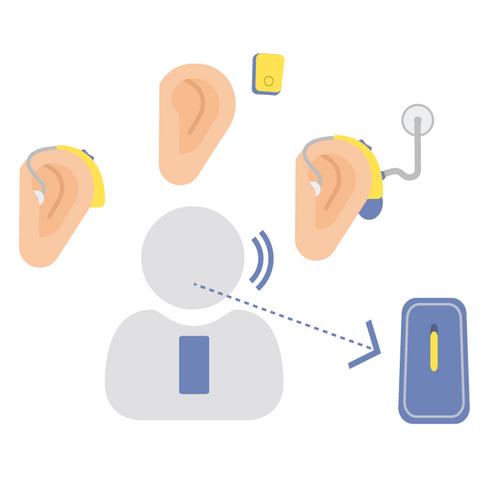What are Assistive Listening Devices?
Assistive listening devices work with your hearing aids or implants help boost your hearing in everyday situations at home, work and socially.
They transmit sound directly from its source to the listener to overcome difficulties with distance, background noise or reverberation.
If you are employed or in education, you may be entitled to help towards the cost of any equipment you may need through
Why would I need an ALD?
Assistive listening devices are widely used in educational settings but can be just as appropriate in a variety of situations where listening to single sound source (speech/music/video) is difficult
- They are suitable for those who have difficultly listening to speech with their current bone anchored hearing system/cochlear implant/hearing aids
- Assistive listening devices are most helpful in noisy situations and when the speaker is at a distance from the listener
- They are good for overcoming poor room acoustics as well.
- Design integrated and ear level receivers are now available making them much more suitable for smaller ears compared to body worn models
Types of Assistive Listening Devices
FM Systems (also known as personal listeners or radio aids)
FM Systems are wireless devices that can be particularly helpful in hearing over distance and in noisy environments.
They pick up sound from the person who is talking and transmit it directly to your hearing aid or implant, reducing background noise and making it easier for you to understand speech.
Neck loops
A neck loop is a loop of wire worn (very loosely) around the neck and connected to a sound source. The t-coil in the hearing aid picks up the magnetic signal from the neck loop and then processes the sound through the hearing aid.
A basic neck loop just takes the place of a “headset” for those who have t-coil equipped hearing aids. A neck loop can be plugged into any device (sound source) that can be used with a headset such as an iPod or mp3 player, headphone connection at the gym, TV or stereo, personal amplifier, computer, cell phones, and land line telephones. The sound from the connected device is relayed from the neck loop to the t-coil in the hearing aid, working just like a headset.
TV listeners
TV listeners let you listen to your TV at a volume you are comfortable with at the same time as the TV speaker. This means you can listen at a volume you prefer without disturbing others. They may also have features to help you hear the sound more clearly, including tone control and speech enhancement.
They are normally made up of:
- A base unit or transmitter that connects to the audio output socket on your TV.
- A receiver. If you use hearing aids, you can use a device that connects to your hearing aid, such as a neck loop or ear hook. If you don’t use hearing aids, the receiver can be wireless headphones or earbuds.
Amplified phones
A phone which allows you to control the volume and/or tone of the speaker so that you can hear speech clearly.
Alarm systems
These systems alert you when required using a vibrating alarm and/or flashing light. These can include:
- Doorbell
- Personal alarm
- Alarm clock
- Baby monitors
- Smoke alarms. These can usually be obtained by your local fire authority. Contact them for more details.
Some social service departments may be able to offer you basic equipment to help support you in the home, please contact your local department for more information.
There are various makes and models of the above ALDs available on the market, it is worth doing your research or speaking to a hearing professional before purchasing any equipment to make sure it is compatible with your hearing technology.
Connecting your ALD
Many hearing aids now have wireless or Bluetooth capacity. Wireless connectivity allows wearers to stream phone calls, television, and music directly to hearing aids without additional equipment.
Most smart mobile phones have hearing aid settings built in the accessibility settings. You can activate and change these so that they work better for you. You should be able to find these settings by:
- Visiting the accessibility menu on your phone’s general settings menu
- Clicking on the option for hearing or hearing enhancement.
Most hearing aids have a loop capacity which can help in certain situations, such as bank, cinemas, church halls and anywhere you see this symbol as well as with neck loops:
The hearing loop consists of a microphone to pick up the spoken word; an amplifier which processes the signal which is then sent through the final piece; the loop cable, a wire placed around the perimeter of a specific area i.e. a meeting room, a church, a service counter etc to act as an antenna that radiates the magnetic signal to the hearing aid. This will need to be activated in your hearing aid by your audiologist.

Find Out More About Hearing Loss Support
If you would like more information about assistive listening devices for hearing loss support, please don't hesitate to get in touch with us at Hear Together.


